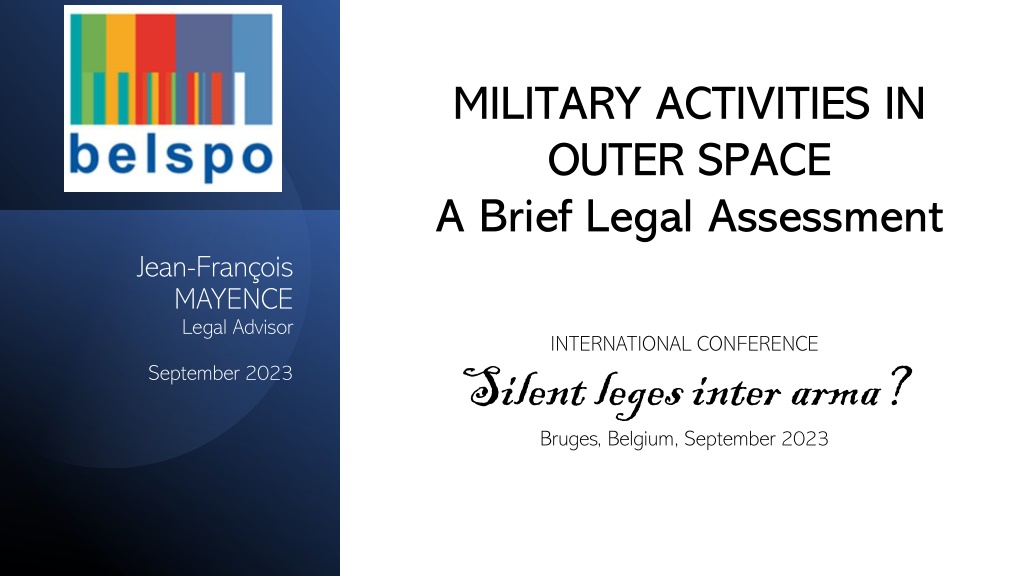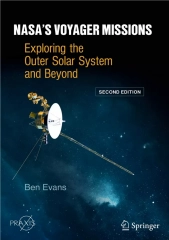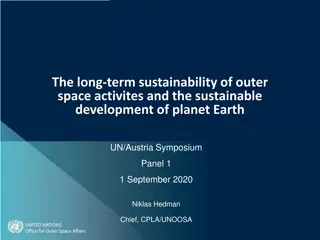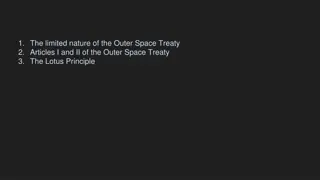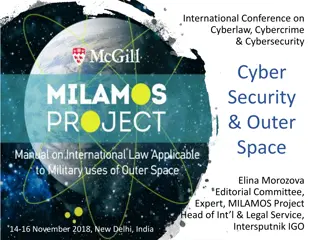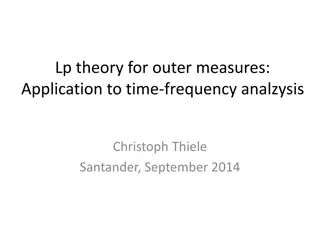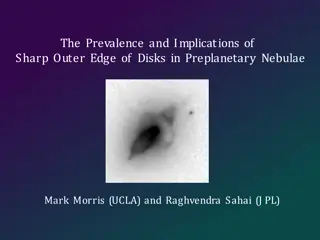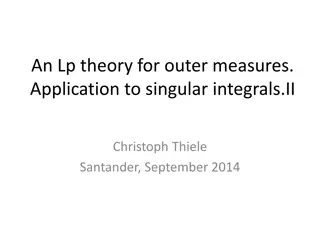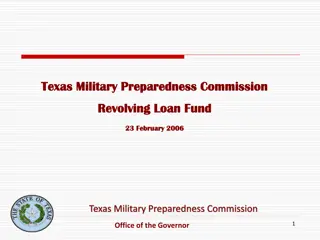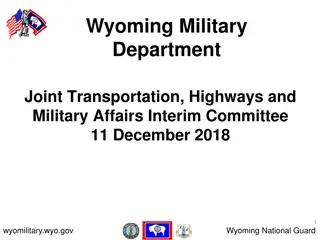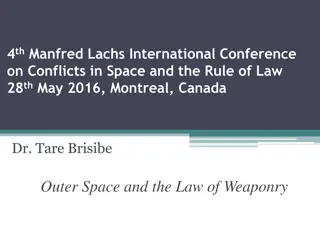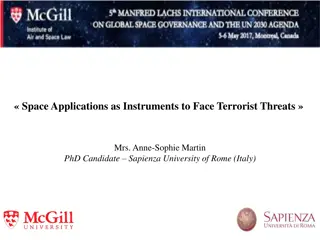International Laws Regulating Military Activities in Outer Space
The legal advisor, Jean-François Mayence, presented a detailed overview of international regulatory laws concerning military activities in outer space at the International Conference in Bruges, Belgium. The presentation highlighted key treaties such as the 1967 Outer Space Treaty and the 1979 Agreement governing activities on celestial bodies, outlining prohibitions on the placement of weapons of mass destruction, military infrastructure, nuclear explosions, and more. These laws aim to ensure the peaceful use of outer space and celestial bodies while restricting hostile actions and environmental harm.
Download Presentation

Please find below an Image/Link to download the presentation.
The content on the website is provided AS IS for your information and personal use only. It may not be sold, licensed, or shared on other websites without obtaining consent from the author. Download presentation by click this link. If you encounter any issues during the download, it is possible that the publisher has removed the file from their server.
E N D
Presentation Transcript
MILITARY ACTIVITIES IN OUTER SPACE A Brief Legal Assessment Jean-Fran ois MAYENCE Legal Advisor INTERNATIONAL CONFERENCE Silent leges inter arma? Bruges, Belgium, September 2023 September 2023
Provisions of International Regulatory Law Provisions of International Regulatory Law Specific to Military Activities in Outer Space Specific to Military Activities in Outer Space (1/7) (1/7) 1967 Treaty on Principles governing the Activities of States in the Exploration and Use of Outer Space, including the Moon and other Celestial Bodies (OST) Art. IV: States Parties to the Treaty undertake not to place in orbit around the Earth any objects carrying nuclear weapons or any other kinds of weapons of mass destruction, install such weapons on celestial bodies, or station such weapons in outer space in any other manner. The Moon and other celestial bodies shall be used by all States Parties to the Treaty exclusively for peaceful purposes. The establishment of military bases, installations and fortifications, the testing of any type of weapons and the conduct of military maneuvers on celestial bodies shall be forbidden. The use of military personnel for scientific research or for any other peaceful purposes shall not be prohibited. The use of any equipment or facility necessary for peaceful exploration of the Moon and other celestial bodies shall also not be prohibited. 1979 Agreement governing the Activities of States on the Moon and other Celestial Bodies (incl. celestial bodies orbit) (MOON)
Provisions of International Regulatory Law Provisions of International Regulatory Law Specific to Military Activities in Outer Space Specific to Military Activities in Outer Space (2/7) (2/7) 1963 Treaty Banning Nuclear Weapon Tests in the Atmosphere, in Outer Space and Under Water (PTBT) Art. I, 1: Each of the Parties to this Treaty undertakes to prohibit, to prevent, and not to carry out any nuclear weapon test explosion, or any other nuclear explosion, at any place under its jurisdiction or control: (a) in the atmosphere; beyond its limits, including outer space; or under water, including territorial waters or high seas [ ] 1996 Comprehensive Nuclear-Test-Ban Treaty (CTBT) (not in force) 1977 Convention on the prohibition of military or any other hostile use of environmental modification technique (ENMOD) Art. I, 1: Each State Party to this Convention undertakes not to engage in military or any other hostile use of environmental modification techniques having widespread, long-lasting or severe effects as the means of destruction, damage or injury to any other State Party.
What is explicitly prohibited in What is explicitly prohibited in Outer Space? Outer Space? (3/7) (3/7) aggressive behaviour or maneuvre (>< UN Charter)(OST 1967) placement, test of weapon of mass destruction (OST 1967) any nuclear explosion (PTBT 1963) military maneuvre, military infrastructure on celestial bodies (incl. the Moon) (OST 1967 / MOON 1979) test of any weapon on celestial bodies (incl. the Moon) (OST 1967 / MOON 1979) restriction of access to celestial bodies areas (OST 1967 / MOON 1979) intentional generation of space debris (ENMOD 1977)
What is implicitly prohibited in What is implicitly prohibited in Outer Space? Outer Space? (4/7) (4/7) destruction / capture of a foreign- registered space object (OST 1967) intentional harmful interference with foreign space activities (OST 1967) using outer space for purposes which are not compliant with international law (incl. UN Charter) (OST 1967)
What is What is not in Outer Space? in Outer Space? (5/7) not prohibited prohibited (5/7) collection of Earth observation intelligence use of satellite systems for tactical or non-tactical support of military operations placing and using conventional weapons in a non-aggressive manner (active defence systems) - ex.: Salyut-3 onboard-gun restriction to (de facto) access to outer space imposed by United Nations Security Council (e.g. UNSC Resolution 2270 (2016)) research & development for military purposes and application
Current Issues & Current Issues & Trends from Space Trends from Space Law s Standpoint Law s Standpoint (6/7) (6/7) growing tension in the global context response through national legislation and policies (rather than through multilateral instruments) - development of national surveillance capacities arsenalization of orbital space (operational domain, attacks / threat against military and civil critical services) trend to expand military space capacities (ex.: US SDA Proliferated Warfighter Space Architecture developed through an enhanced industrial procurement base) versus sparing of orbital resources private actors directly and (pro)actively involved in international conflicts (cf. SpaceX StarLink): with which consequences? race for lunar resources: role of national space forces not clear yet
The mutual integration of Space and Defence is a continuous, though accelerating, natural and logical process. It challenges not only international cooperation, but also national, regional policies and regulations. It also challenges existing international space law as the UN treaties mostly reflect post-WWII and Cold War concerns and visions. Conclusion Conclusion (7/7) (7/7) We need to state the same basic principles with other words and maintain peace with new means.
